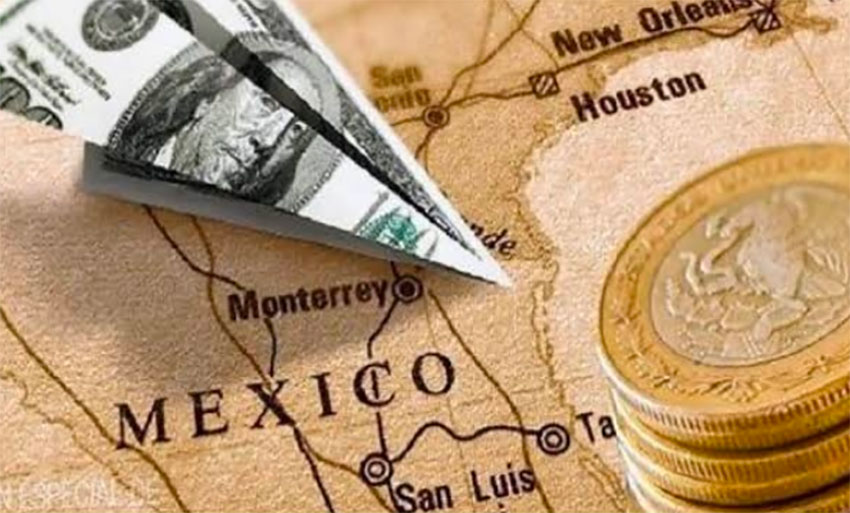Mexico Keeps Breaking Remittances Records
With Remittances on the Rise Globally Mexico Keeps Breaking Records

From January to October of 2022, Mexican families received a record-breaking $48.3 billion in remittances. That’s nearly $50 billion dollars that Mexican families were then able to use to buy food, clothing, and everything else. For families in Mexico, remittances are often a crucial lifeline to prosperity. Yet sending remittances can be complicated, time-consuming, and expensive. Fortunately, some platforms, like Ria, offer quick, simple, and relatively cheap remittances that enable users to send money to the Mexico.
For the Mexican economy, remittances are a vital source of foreign revenue. In fact, in terms of dollar value, remittances trail behind only automotive exports. This means remittances are the second largest source of foreign revenues for all of Mexico.
The Wilson Center conducted a study in 2021 on remittances to Mexico. The Center found that roughly 94 percent of remittances came from the United States. Unsurprisingly, California and Texas, two massive states that border Mexico, were the two biggest states in terms of revenues sent across the border. The third state comes as perhaps a bit of a surprise: Minnesota.
The fact is, remittances from essentially every state in the continental United States are quite common.
Why Are Remittances to Mexico So High?
The simple economics are, well, simple: the cost of labor in the United States is much higher than the cost of labor in Mexico. For this reason, many people from Mexico and Latin America as a whole move to the United States in search of higher wages. Often, they can earn higher incomes than they would in their home country.
The United States, meanwhile, has contended with low unemployment rates for several years now. This makes labor hard to find and can also make it expensive. The result? High costs of doing business, inflation, and other issues. However, cheaper labor from Mexico and other countries in Latin America can keep costs down and may even slow inflation.
Many foreign laborers in the United States work on seasonal visas in agriculture. While many parts of agriculture have been automated, reducing the need for manual labor, many parts of the industry are still heavily dependent on manual labor. Most Americans don’t want to do the work, especially for relatively low wages. It can be hard physically, and working environments are often tough with long days under hot suns common.
Without foreign laborers willing to work the fields and orchards, crops might be left to rot. During the COVID-19 pandemic, when borders were locked down, many farms faced labor shortages. As a result, produce was sometimes left to rot in California, Texas, and elsewhere.
Immigrant Laborers Are Common in Other Industries Too
Foreign workers are common in many other industries. For example, it’s believed that roughly 20 percent of construction workers are immigrants. Participation often varies by specific roles but either way, immigrants play a crucial part. Construction costs have risen in recent months, but without immigrants, costs would likely rise much higher.
While agriculture and construction represent the common occupations for immigrant labor, such laborers are also common in machinery maintenance and repair, glass manufacturing, and clay building materials, among others. Not all of these laborers are from Mexico, of course, but many of them are. Immigrants from other countries, say Guatemala, also send remittance to their home countries.
Fortunately, services that enable folks to send money to Mexico and other countries are quite affordable and simple to use.
A Quick Peek at Remittances Globally
Certainly, remittances from the United States to Mexico and other Latin American countries are common. Globally, remittances from and to other countries are also pervasive. In fact, Mexico isn’t even the most common destination for remittances (globally). That title instead goes to India, which receives an estimated $100 billion in remittances per year. Mexico comes in at number 2, followed by China, the Philippines, and Egypt.
As a share of the economy, some smaller countries are heavily dependent on remittances, even if the total sum is nowhere near as high as say India, China, or Mexico. Remittances are worth a share of roughly 50 percent of the GDP in Tonga, 38 percent in Lebanon, and 34 percent in Samoa. For these nations, affordable remittance solutions are a huge boon.
The United States is a major source of remittances, of course. Canada, Europe, and Australia, among others, also are major sources of remittances. Ultimately, sending money from one country to another is a major part of the global economy. Fortunately, the right remittance services offer affordable, simple, and speedy remittances.






